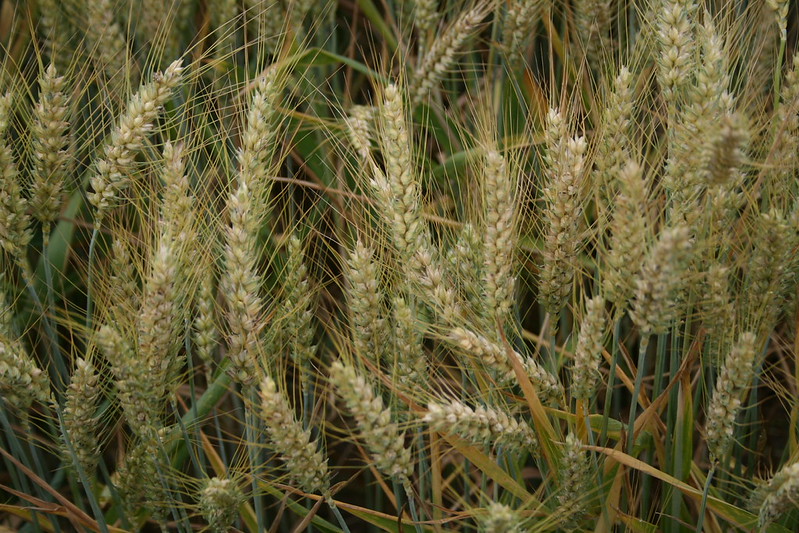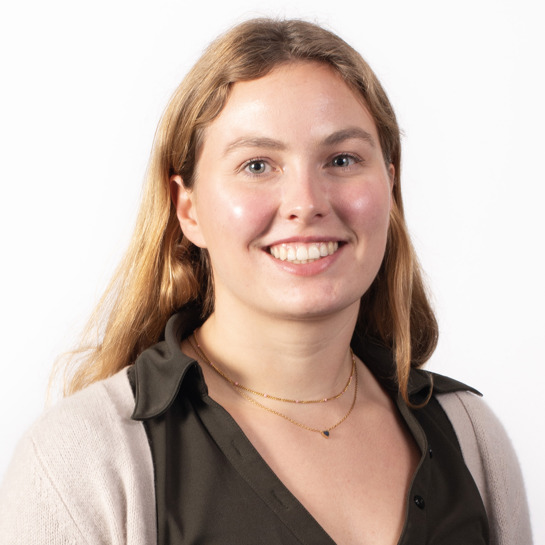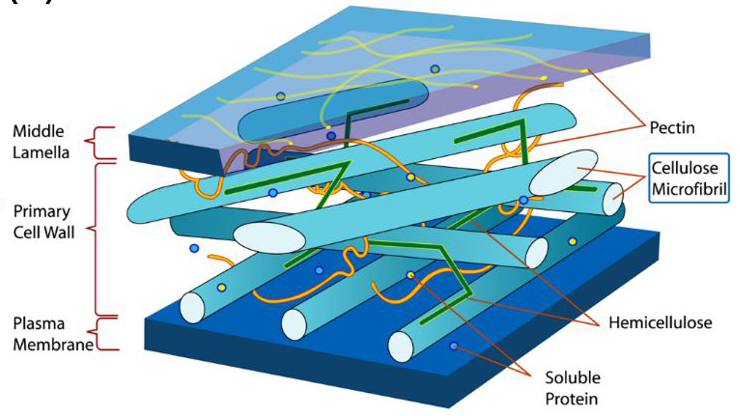Extending an Existing Calibration Method to Calibrate Models of Wheat Growth
Accurate crop yield predictions and a thorough understanding of the cropland ecosystem are essential components of food security, effective fertilization practices, and ecosystem resilience. Mathematical models of crop growth that utilize computer code allow farmers to analyze projected yield. Given information about soil, weather, and plant physiology, these models can simulate a given crop’s development throughout the growing season.
The Data Assimilation Linked Ecosystem Carbon crop model (DALEC-Crop) is one such tool [3]. By tracking the daily flows of carbon within a crop field, it simulates biomass accumulation and predicts yield. Scientists can use DALEC-Crop to better understand crop growth and carbon uptake and anticipate harvest outcomes without conducting years of costly field experiments.
But like most complex computer models, DALEC-Crop is difficult to calibrate; the underlying ecological system is complex, the observational data is noisy, and the computations (both the computer model and its calibration) can be slow. To address these limitations, we developed an application-driven extension of an existing calibration method called history matching, which relies on ecological theory and efficiently rules out implausible crop model parameter settings in light of the data. When compared to the CARbon DAta MOdel FraMework (CARDAMOM)—DALEC-Crop’s native Bayesian calibration approach—we found that history matching substantially speeds up calibration while otherwise providing similar results. This outcome enables the use of DALEC-Crop and other analogous models to support real-world decisions about agriculture.

Models like DALEC-Crop rely on a large set of uncertain parameters that govern a multitude of variables: the rapidity of crop development, the optimal temperature for growth, leaves’ efficient conversion of sunlight into sugars, and the turnover rate of different carbon pools. To calibrate the model, we must adjust these parameters so that the simulated outputs sufficiently agree with observed data and all associated uncertainties. In practice, doing so is difficult for the following three reasons:
- High dimensionality: Simulators like DALEC-Crop may have many uncertain parameters that create a large input parameter space.
- Noisy, limited observations: Measurements are often sparse and prone to errors.
- Structural error: No model is perfect, and the underlying ecological processes are simplified so that a structural discrepancy from the real physical system will form assumptions or missing mechanisms.
CARDAMOM applies a Bayesian Markov chain Monte Carlo algorithm to retrieve posterior distribution on DALEC-Crop’s parameters [5]. The powerful framework incorporates additional ecological and dynamic constraints on the parameters and DALEC-Crop outputs [1], but it is also computationally expensive. The latter is especially true when CARDAMOM scales to large datasets or repeated simulations, as it calibrates DALEC-Crop via a pixel-by-pixel approach. This expense motivated our search for alternative calibration methods that are more efficient but still scientifically reliable.
Rather than search for the best parameter values, history matching—which has roots in applied mathematics and oil reservoir modeling [2]—rules out implausible regions of parameter space, such as observational and structural error [4]. To make this approach suitable for DALEC-Crop, we adapted CARDAMOM’s existing ecological and dynamic constraints for history matching by adding additional constraints, i.e., mathematical expressions of common-sense ecological rules to ensure that calibrated parameters and outputs remain biologically realistic. For instance, a crop needs to reach maturity, and the decomposition rate of leaf litter to soil organic matter must be greater than the decomposition rate of soil organic matter to air. History matching and the addition of these constraints creates an efficient, ecologically grounded calibration framework.
To evaluate our technique, we designed a twinned experiment that directly compares history matching and CARDAMOM. First, we tested both methods on synthetic data and controlled the “true” parameter values to assess each method’s ability to recover the correct information under idealized conditions. Then we turned to field data, focusing on Scottish winter wheat (see Figure 1). Both approaches captured key parameter behaviors equally well and achieved comparable accuracy by producing similar predictions of yield at harvest. But history matching with our constraints achieved major efficiency gains when compared to CARDAMOM; our technique also required far fewer computations, making it feasible for larger or repeated applications. Equally important is history matching’s transparent representation of uncertainty. By explicitly handling structural error, it affirms that the results are only an approximation of reality with some error involved — which is an essential consideration for decision-makers.
While our work centered on DALEC-Crop and Scottish winter wheat, its generality makes it appliable to other crops, ecosystem models beyond agriculture, and additional domains. As satellite and remote sensing data become increasingly available, fast calibration (of digital twins, for example) will help scientists leverage this information as much as possible.
Future work could extend the framework to incorporate spatial information. We currently calibrate DALEC-Crop independently at each cell of a grid over a field, but the integration of spatial information from nearby locations could ensure more precise calibration and more informative ecosystem modeling. Ultimately, combining ecological theory with efficient algorithms can increase the practicality and usability of such modeling.
Nina Fischer delivered a minisymposium presentation on this research at the 2025 SIAM Conference on Computational Science and Engineering (CSE25), which took place earlier this year in Fort Worth, Texas. She received funding to attend CSE25 through a SIAM Student Travel Award. To learn more about Student Travel Awards and submit an application, visit the online page.
SIAM Student Travel Awards are made possible in part by the generous support of our community. To make a gift to the Student Travel Fund, visit the SIAM website.
References
[1] Bloom, A.A., & Williams, M. (2015). Constraining ecosystem carbon dynamics in a data-limited world: Integrating ecological “common sense” in a model-data fusion framework. Biogeosciences, 12(5), 1299-1315.
[2] Craig, P.S., Goldstein, M., Seheult, A.H., & Smith, J.A. (1997). Pressure matching for hydrocarbon reservoirs: A case study in the use of Bayes linear strategies for large computer experiments. In C. Gatsonis, J.S. Hodges, R.E. Kass, R. McCulloch, P. Rossi, & N.D. Singpurwalla (Eds.), Case studies in Bayesian statistics (Vol. 3, pp. 37-93). Lecture notes in statistics. New York, NY: Springer.
[3] Revill, A., Myrgiotis, V., Florence, A., Hoad, S., Rees, R., MacArthur, A., & Williams, M. (2021). Combining process modelling and LAI observations to diagnose winter wheat nitrogen status and forecast yield. Agronomy, 11(2), 314.
[4] Vernon, I.R., Goldstein, M., & Bower, R.G. (2010). Galaxy formation: A Bayesian uncertainty analysis. Bayesian Anal., 5(4), 619-670.
[5] Worden, M.A., Bilir, T.E., Bloom, A.A., Fang, J., Klinek, L.P., Konings, A.G., … Zhu, S. (2025). Combining observations and models: A review of the CARDAMOM framework for data-constrained terrestrial ecosystem modeling. Glob. Chang. Biol., 31(8), e70462.
About the Author
Nina Fischer
Ph.D. student, University of Edinburgh
Nina Fischer is a final-year Ph.D. student in statistics at the University of Edinburgh in Scotland under the supervision of Amy Wilson, Chris Dent, and Matthew Williams. Her research focuses on uncertainty quantification for complex computer models, with applications to crop growth and carbon cycle models.

Related Reading
Stay Up-to-Date with Email Alerts
Sign up for our monthly newsletter and emails about other topics of your choosing.






